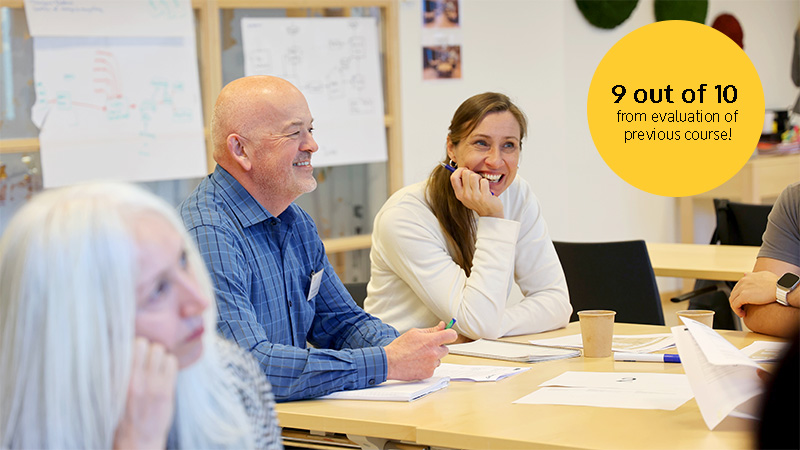New global standard counts the cost of environmental damage
Environmental damage costs society enormous amounts of money – and often leaves future generations to foot the bill. Now, a new ISO standard will help companies valuate and manage the impact of their environmental damage, by providing a clear figure for the cost of their goods and services to the environment.
We know what goods and services cost us, but what does the environment pay? For many years now, this question has been the focus of several global companies and researchers at the Swedish Life Cycle Center, a competence centre hosted by Chalmers University of Technology, Sweden. For as long as 30 years, they have been using the so-called ‘EPS tool’to place a monetary value on environmental damage.
Over the past three years, Bengt Steen, Professor Emeritus at Chalmers, has led the development of a new ISO standard for monetary valuation. The work has been in collaboration with AB Volvo, Essity, Nouryon (formerly Akzo Nobel Specialty Chemicals) and the IVL Swedish Environmental Institute. The initiative was taken by Swedish Life Cycle Center.
“One reason why sustainable development does not move fast enough is that it is not linked to the economy,” says Bengt Steen. “Experts speak one language, and business leaders another. The negative environmental effects often remain just figures on paper. But by translating environmental issues into a monetary value, it becomes much easier to present the whole picture to an organisation and influence their strategic decisions.”

Unlike many other tools, EPS weighs different types of environmental impacts, not just the effect on climate. For example, a given course of action may be beneficial for the climate but damaging for biodiversity or public health. With this approach, an overall picture is reached of what impact a product or service has on the environment, throughout its entire life cycle. A large variety of aspects are covered. Until now, this has been complex work, requiring a lot of manual input and expert knowledge.
“With this standard, we can remove several of the obstacles to increased usage of monetary valuation. In a few years, when users can routinely assess the total environmental damage cost for a given investment, supplier, product design and so on, environmental issues can occupy a more central place in the boardroom. Costs to the environment can be presented side by side with profits for the company,” says Bengt Steen.
Emma Ringström, Sustainability Manager at Nouryon, says that monetary valuation has given the company much valuable insight.

“We have made monetary valuation of a number of our value chains and included the results of this in our annual report. The analyses include financial, social, human and environmental capital, where environmental capital is partly calculated with life cycle assessment and with EPS as a valuation method. The tool has also used to see which activities in the value chain have a large total environmental damage cost compared to profit, and therefore need to be prioritised to become more sustainable.”
Although tools such as EPS have existed for 30 years, and many companies like Nouryon use them to calculate their costs to the environment, Bengt Steen believes their development moves too slowly. There is no standardised framework, and few databases exist that enable their use in a uniform manner.
Therefore, in 2015, the idea of a new ISO standard was born within Swedish Life Cycle Center. Together with SIS – the Swedish Standards Institute – a proposal was written that now after just over three years of work, together with many internationally recognised experts, is launched.
“Few things yield such an impact as these type of heavyweight, international standards,” explains Bengt Steen. “When companies in the future can see where there are clear environmental benefits, investments are stimulated for a sustainable business.”
The ISO standard contains a guide for how monetary valuation should be made, defines terms and sets requirements for documentation. By extension, the standard is expected to lead to increased collaboration between experts of various kinds, as well as helping to create credible databases and software.
More about the standard for environmental damage costs
- Full name: ISO 14008 – Monetary valuation of environmental impacts and related environmental aspects
- Content: A framework, processes, terms and documentation for monetary valuation of environmental damage costs
- Developed by: Working group WG7 within ISO TC207/SC1.
- Initiative taken by/participants/financiers: Swedish Life Cycle Center hosted by Chalmers University of Technology, Nouryon, Essity, Volvo Group, Vattenfall, IVL Swedish Environmental Research Institute, Nordic Investment Bank, Swedish Energy Agency, VINNOVA Sweden’s innovation agency
Link to the standard: ISO 14008:2019 Monetary valuation of environmental impacts and related environmental aspects
Link to EPS tool: Environmental Priority Strategies in product design
Text by Ulrika Georgsson
Illustration by Yen Strandqvist
For more information, please contact:
- Bengt Steen, Professor Emeritus in Environmental Science at Chalmers University of Technology and project manager, +46 70 816 29 31, [email protected]
- Sara Palander, Director of the Swedish Life Cycle Center, +46 72 352 61 25, [email protected]
- Jimmy Yoler, Project manager SIS, Swedish Standards Insitute, +46 85 555 20 16, [email protected]
20190318_New global standard counts the cost of environmental damage
20190318_Ny global standard sätter pris på miljöförstöringen
ISO 14008 publiceras som svensk standard inom kort på sis.se.

